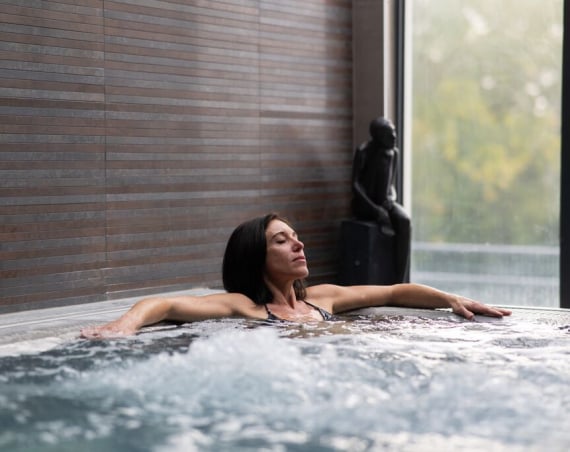Even though there are some key differences between yoga and Pilates, there’s a tendency to group these two exercises together. And that’s understandable.
Both are holistic exercises, which means they affect the whole person, going beyond physical training to help you look after mental well-being as well as fitness. Yoga and Pilates are open to pretty much everyone as low-intensity, low-impact workouts. Both types of exercise can support you with strengthening your core and improving posture.
But as we’ve said, there are differences – and it’s important to know about these before you choose your class. Let’s take a closer look.

What is yoga?
The ancient practice of yoga emphasises asanas (postures), breath control and meditation to promote overall well-being and self-awareness. While there are multiple forms of yoga and a wide variety of poses, the focus is always on connecting the mind and body by matching breathing to movement. The good news is that yoga is easy to start and can be a great way to help manage anxiety, depression, high blood pressure and more, especially if you’re over 50.
While it all sounds very chill, it’s a myth that yoga isn’t a “proper” workout. Poses can be challenging and build serious strength and flexibility throughout your body. With so many different forms of yoga, you can choose a class to suit your needs — whether it’s a dynamic, power-oriented session or a calming Yin class that will help you unwind after a long day and maybe even alleviate some lower back pain.

What is Pilates?
Developed in the 1920s by Joseph Pilates, Pilates is a much newer form of exercise that was initially for rehabilitating injured soldiers. It aims to strengthen the core, stabilise and elongate the spine, and improve overall strength and balance. When we think about its roots, it’s no wonder Pilates is recommended for those with arthritis, back pain and other physical challenges. It’s also an effective way to prevent future issues if you’re already fit and injury-free.
While there are several forms of Pilates — with some using specialised equipment, such as Reformer Pilates — most classes take place on the mat, emphasising small movements and controlled breathing to work the core and pelvic floor. Although the speed and intensity of Pilates classes vary, movement is controlled and builds gradually, making this a safer option for those recovering from injuries or exploring Pilates for the first time.

The differences between yoga and Pilates
- Mind-body connection and spirituality: Yoga often incorporates meditation, breathing exercises and mindfulness. While Pilates teaches mental focus and breath control, its primary goal is alignment and muscular balance. It doesn’t delve into spirituality to the same extent as yoga.
- Variety of classes: There is a range of yoga styles, from intense to relaxing, all of which can vary according to the instructor. With Pilates, on the other hand, movements and principles stay consistent across different Pilates classes.
- Focus on resistance training: One of the defining features of Pilates is its emphasis on resistance training. With exercises such as squats, Pilates aims to build strength, particularly in the core. Yoga also builds strength and flexibility but doesn’t use resistance in the same way.
- Equipment: Most types of yoga require very little equipment, usually just a mat and occasionally props like blocks. Pilates often incorporates more equipment, especially in a studio and with the machines used in Reformer Pilates.
- Approach to movement: Yoga classes will include either holding static poses or flowing from one pose to another in sequences. Pilates often involves holding a base pose and then adding movement to challenge the core and improve stability and strength.
- Intensity: A typical yoga class might start with gentle poses, gradually build up to more challenging ones, and then wind down with relaxation and meditation. Pilates tends to maintain a steadier pace throughout the session, focusing on consistency.
- The relaxation pose: Most yoga classes culminate in Savasana, or the Corpse Pose, which involves lying on the yoga mat and absorbing the benefits, relaxing mind and body. While Pilates might also end with relaxation stretches or techniques, it’s not the same everywhere.
Pilates vs yoga: which is right for you?
It’s completely up to you! While they share some similarities, yoga and Pilates each have their unique philosophies, techniques and focus points. If you like routine, structure and attention to detail, you may prefer Pilates, while yoga may be more appealing for creative types looking for more freedom and flow.
That being said, there’s no reason you can’t do both! Strengthening your core in Pilates class will give you better balance in yoga, and improving your flexibility in yoga will see you move deeper in Pilates. It’s a win-win.
You could also try SPIRIT, David Lloyd Clubs’ holistic signature class that combines elements of both yoga and Pilates as well as meditation. Whatever you decide to do, yoga and Pilates classes are available at our health clubs around the UK. Contact your local club to find out more.
Find a club



